January 2019: The race for the Golden Nica has begun
But let’s start all over again. For Ars Electronica, the year 2019 begins as early as December 2018, during the Christmas holidays to be precise. Instead of putting ourselves on our lazy feet, we have once again tried to make school-free time as exciting as possible for our students in the Museum of the Future, for example in our children’s research lab. The play comes first here.
Before the museum is partially closed due to the major reconstruction, visitors have the opportunity to dive into virtual worlds in the VRLab for the last time, to make their DNA visible in the BioLab, to design digital mythical creatures in the FabLab and cut them out with a laser cutter, or to write words on a screen in the BrainLab using only the power of thought.
“Goodbye, Paro!” is also the motto for all young and old fans of the cute robotic seal. During various guided tours and workshops, they will have the opportunity to say goodbye to Paro and all our other exhibits before the “Main Gallery” of the Ars Electronica Center closes on February 24 for the conversion.

Paro, the Robo Seal, Credit: Ars Electronica / Martin Hieslmair
At Ars Electronica, the beginning of each year is traditionally the time for invitations to tender, submissions and open calls. In addition to initiatives such as the PRIX BLOXHUB INTERACTIVE,, which we support and which is dedicated to the fusion of architecture, behavior and technology, two major open calls in particular will go online on January 9: The STARTS Prize and the European ARTificial Intelligence Lab. The first is part of the European Commission’s STARTS initiative and is aimed at technologists, artists, scientists, institutions, labs and companies that have implemented groundbreaking, innovative projects at the interface of science, technology and art.
Ars Electronica recently initiated the second one together with twelve prestigious art and cultural institutions. The European ARTifical Intelligence Lab is a three-year initiative co-funded by the Creative Europe Program of the European Union that offers artists the opportunity to reside with academic institutions: These include the Muntref Centro de Arte y Ciencia, the Laboratorio de Neurociencia de la Universidad Torquato Ditella in Buenos Aires and the University of Edinburgh. The results of the residency will be presented at the Ars Electronica Festival and at twelve network partners throughout Europe.
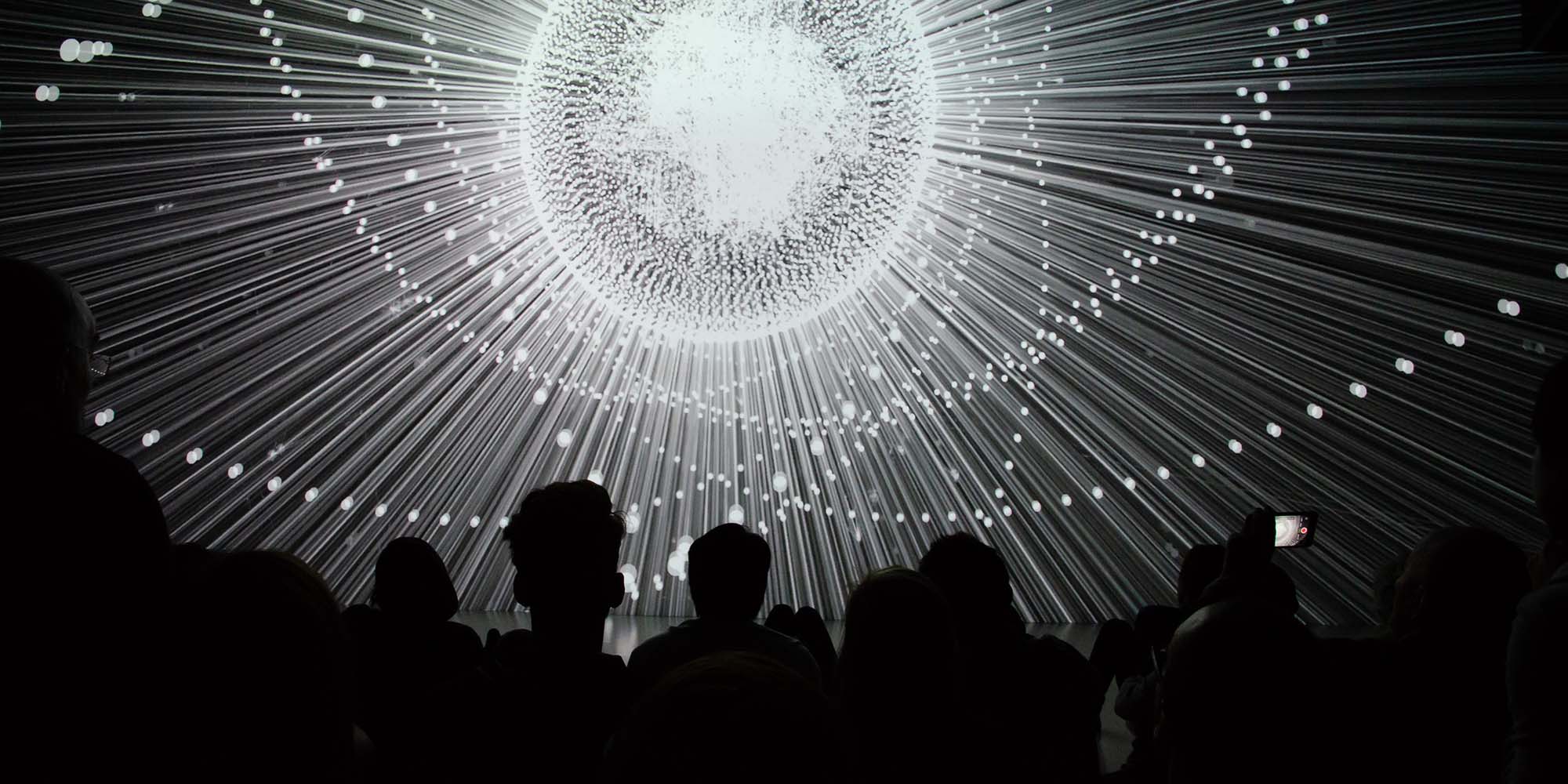
POETIC AI_ERROR / OUCHHH, Credit: Ars Electronica / Magdalena Sick-Leitner
A little later, also in January, the submission deadline for the Prix Ars Electronica begins. The winners can look forward to the sought-after Golden Nicas, prize money of up to 10,000 euros per category and prominent appearances at the Ars Electronica Festival. Artists can submit their projects and artworks in four different categories – including, for the first time, the new “Artificial Intelligence & Life Art” category. In accordance with the theme of Artificial Intelligence, which has left its mark on us across all areas, it is now officially entering the Prix. The other competition categories for 2019 are “Computer Animation” and “Digital Musics & Sound Art”, plus the Austria-wide category “u19 – create your world”, which will be announced for the first time for two age groups.
Two categories are shared by children and teenagers by age – the younger ones are called Young Creatives, the older ones Young Professionals. In addition to cash and non-cash prizes as well as cooperation opportunities, the older young professionals also have the chance to win a Golden Nica, the highest award of the Prix Ars Electronica. Furthermore, in cooperation with the Austrian Open Source Internet Promotion Campaign netidee, a netidee special prize will be awarded to projects that want to take the Internet a step further.
February 2019: Berlin, Tokyo, Beijing, Seoul, Moscow and Linz
In February, Ars Electronica will be touring the world: In Beijing, Seoul and Moscow, our team from Ars Electronica EXPORT will be showing the exhibition “Future Humanity” together with Hyundai; in Volkswagen’s Berlin DRIVE, the big show ERROR – THE ART OF IMPERFECTION will be staged at the same time; our researchers from the Ars Electronica Futurelab will be participating in the School of the Future Festival in Tokyo; and in Linz, the works at the new Ars Electronica Center will be running at full speed.

School of the Future Festival 2019 – Tokyo Midtown, Credit: Tokyo Midtown
With “Future Humanity – Our Shared Planet”, Hyundai Motor Company, the Central Academy of Fine Arts Beijing and Ars Electronica present their first joint exhibition project. The show, which opened in November 2018 but can be seen until the end of February, is dedicated to the social and cultural dimension of technological progress and comprises 25 projects spread across the Hyundai Motorstudios in Beijing, Seoul and Moscow, which can be seen simultaneously – with 17 projects, the Beijing presentation is the most comprehensive.
The DRIVE. Volkswagen Group Forum in Berlin is all about deviations from the norm. An error in itself is neither good nor bad. For us, error is “only” a deviation from what we expect. And this is precisely where the artists in our exhibition enter the game: they are the ones who often deliberately challenge deviations or error. ERROR – THE ART OF IMPERFECTION is a joint exhibition project of Ars Electronica and Volkswagen AG and runs from November 2018 to March 2019.
The Ars Electronica Festival’s focus is much broader, much more diverse and very multifaceted. At the exhibition in Berlin, Curatorial Walks and Artist Talks offer us a completely different opportunity to go into depth and work out what actually makes an error an error.
Manuela Naveau, Curator and Head of Ars Electronica EXPORT
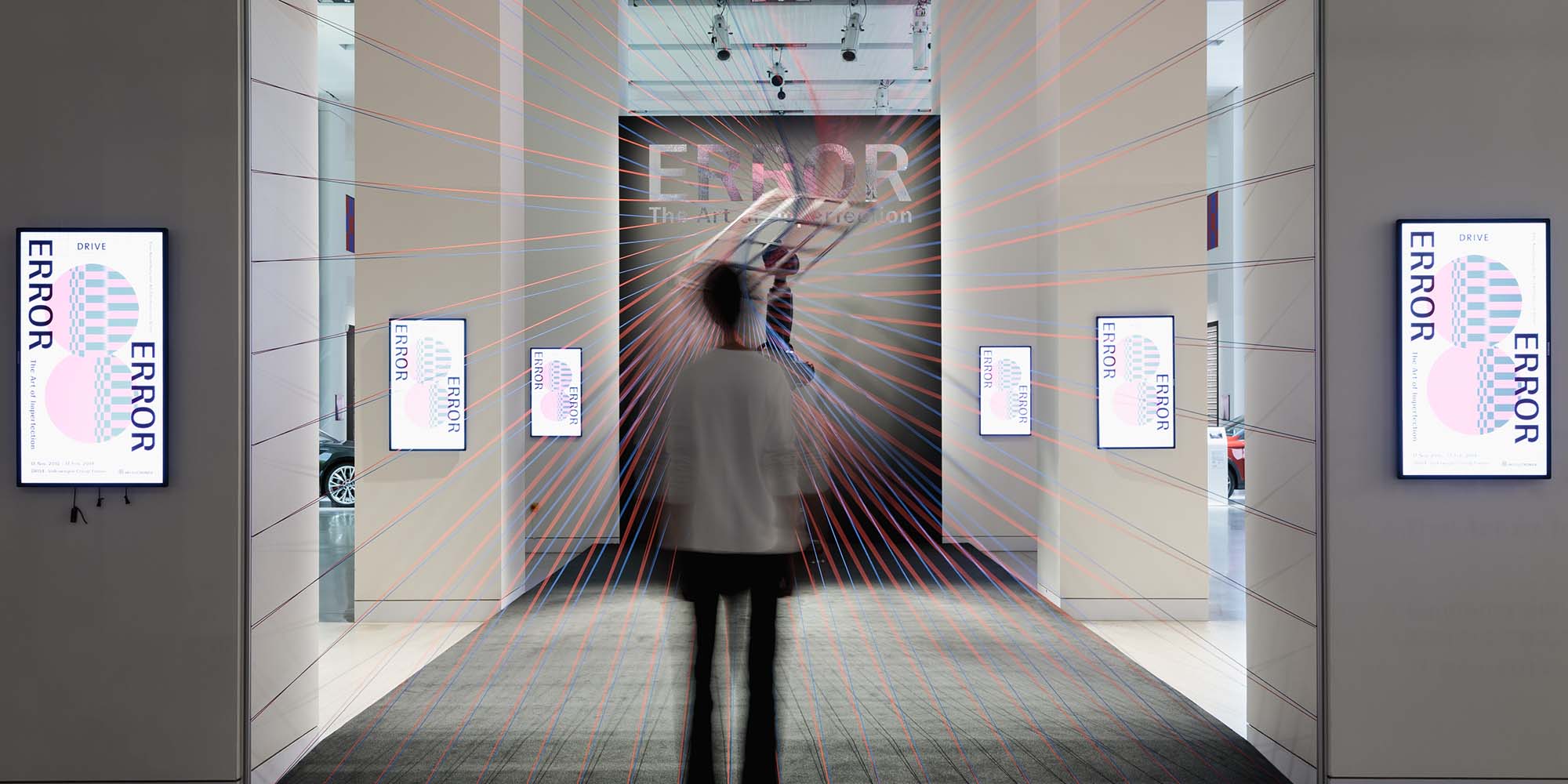
Robot, Doing Nothing / Emanuel Gollob (AT), Credit: vog.photo
With an inspiring mixture of exhibition, lectures and workshops, the series of events „Ars Electronica in the Knowledge Capital“ brings media art to Osaka, Japan for the 9th time and this time is dedicated to the topic “Playware”. With “Flower of Time”, the Futurelab brings a participatory element to the exhibition, allowing visitors to visualize and collect their shared ideas on the use of time.

Ars Electronica in the Knowledge Capital, Credit: Knowledge Capital
It is also announced that the Ars Electronica Festival has inspired the “3 Festival”, which will be held for the first time in Wollongong, New South Wales, Australia, from June 25 to 28, 2020. It will include exhibitions, symposia and concerts and present visions, projects and prototypes by international and Australian artists, scientists and entrepreneurs. The festival organizers will be supported and advised by experts from Ars Electronica.
Meanwhile, the conversion phase to the new Ars Electronica Center is in full swing in Linz. Parallel to this, the last guided tours, the last workshops and the last semester break program will take place in the “old” exhibition rooms and labs. On February 24, it’s time to say goodbye to many beloved exhibits – a reason for us to ask our visitors what their “Top 10” of the last 10 years have been. Click here for the result! Guess which was the most popular object? A tip: It is sweet and fluffy…

Otelo Futurespace – The Digital Playground, Credit: Ars Electronica / Martin Hieslmair
March 2019: The Prix jury assembles
It’s getting serious. The jurors of the AI LAB, the STARTS Prize and the Prix Ars Electronica will gather from all over the world to view, examine and discuss submissions for days on end, and finally decide who will compete for residencies, receive trophies and get prize money. The AI LAB jurors will begin the discussion, followed by the juries of the STARTS Prize and the Prix Ars Electronica. Mariano Sardón, artist, professor and director of the Electronic Art program at the Universidad Nacional de Tres de Febrero, Buenos Aires, Argentina, talks about the AI LAB Residency:
I look forward to art becoming fundamental to the process, because it can function as a flexible glue to build and produce unexpected bridges between concepts, methods, perceptions, materials and visions.
Mariano Sardón, artist and jury member AI LAB Residency
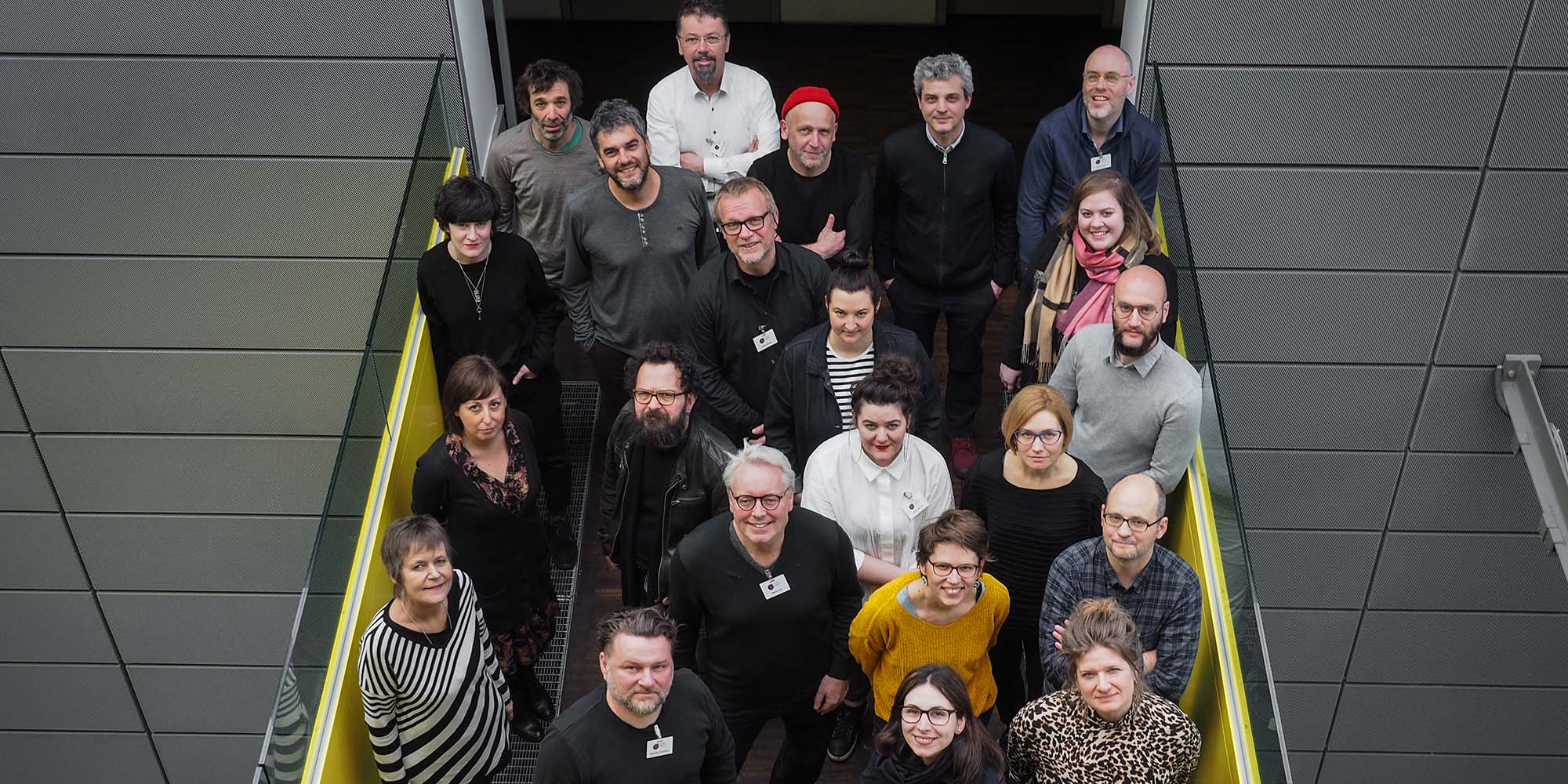
AI LAB Jury 2019, Credit: Ars Electronica / Martin Hieslmair
Here you can find the complete STARTS Prize Jury! Nadav Hochman, co-founder of the Tech + Arts Initiative at the Tech Museum of Innovation in Silicon Valley, is one of the jurors of this competition and talks in an interview about the connections between science, technology and art. Furthermore, the artist Şerife Wong, also one of the jurors of the STARTS Prize, talks about the similarities of science, technology and art and explains in her role as ethics consultant how we should deal with artificial intelligence in society.
And these are the jurors of the Prix Ars Electronica: Moon Ribas (ES), Memo Akten (TR), Jens Hauser (DE), Irini Papadimitriou (GR/UK), Vladan Joler (RS), Christina Kubisch (DE), François Pachet (FR), Soichiro Mihara (JP), Rikke Frisk (DK), Shilla Strelka (AT), Alex Verhaest (BE), Ina Conradi (US/SG), Ferdi Alici (TR), Birgitta Hosea (SW/UK), Nobuaki Doi (JP), Sirikit Amann (AT), Anita Landgraf (AT), Conny Lee (AT), Magdalena Reiter (AT), Nikolaus Glattauer (AT)
There was a lot of discussion, consultation and sifting before the final agreement was reached. The decision was sealed with a group photo of all jury members and the Ars Electronica team involved.
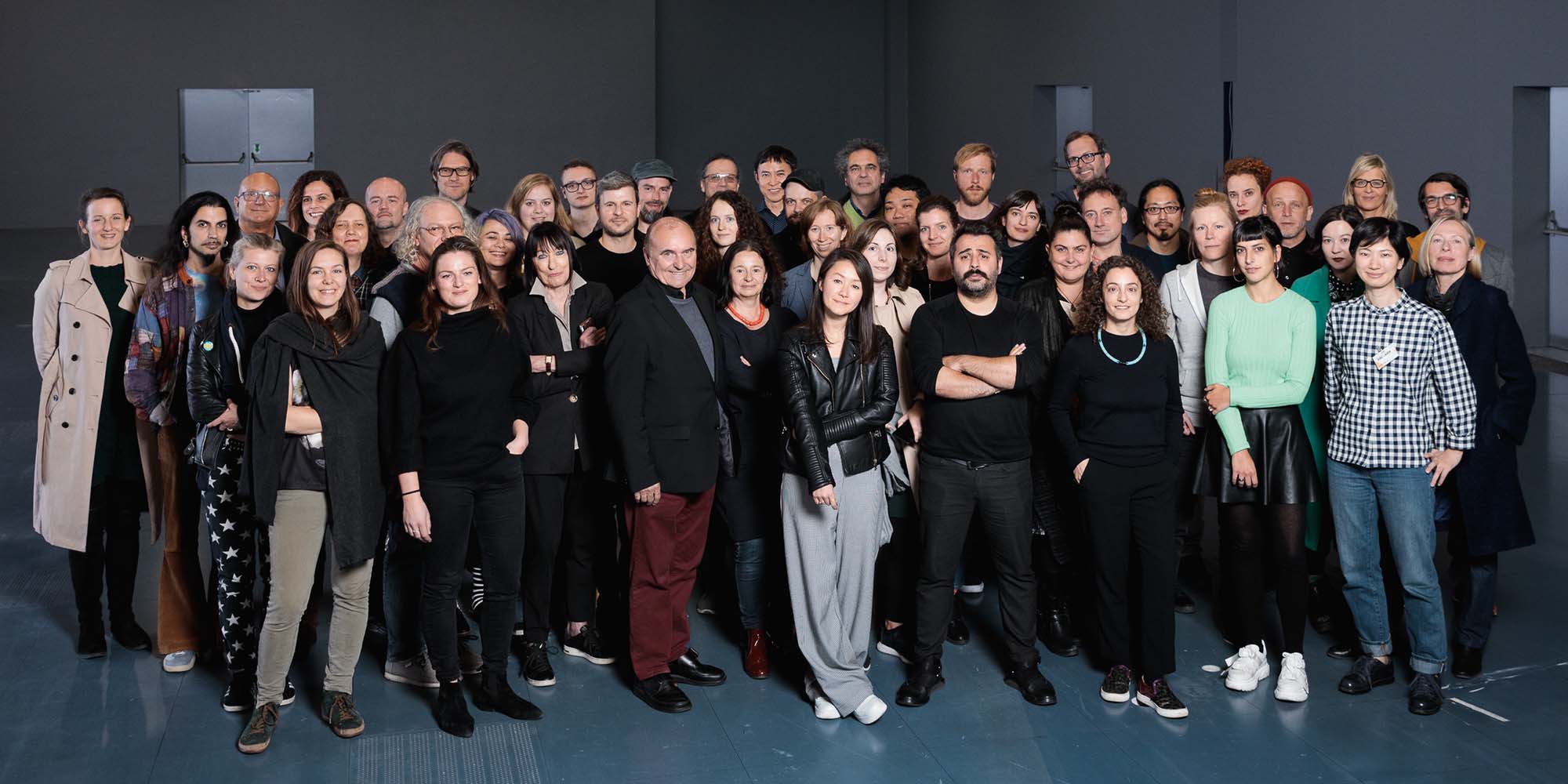
2019 Prix Ars Electronica and 2019 STARTS Prize Jury, Credit: vog.photo
As they leave again, we continue to dismantle, rebuild and reconstruct. In the course of the first construction stage, all basements have been redesigned since the end of February.
After we have returned all the exhibits to artists all over the world and stored all the scientific equipment from our former laboratories for further use, the heavy machinery will be brought in to help remove the exhibition architecture.
Gerold Hofstadler, Technical Director at the Ars Electronica Center, on the intermediate stand
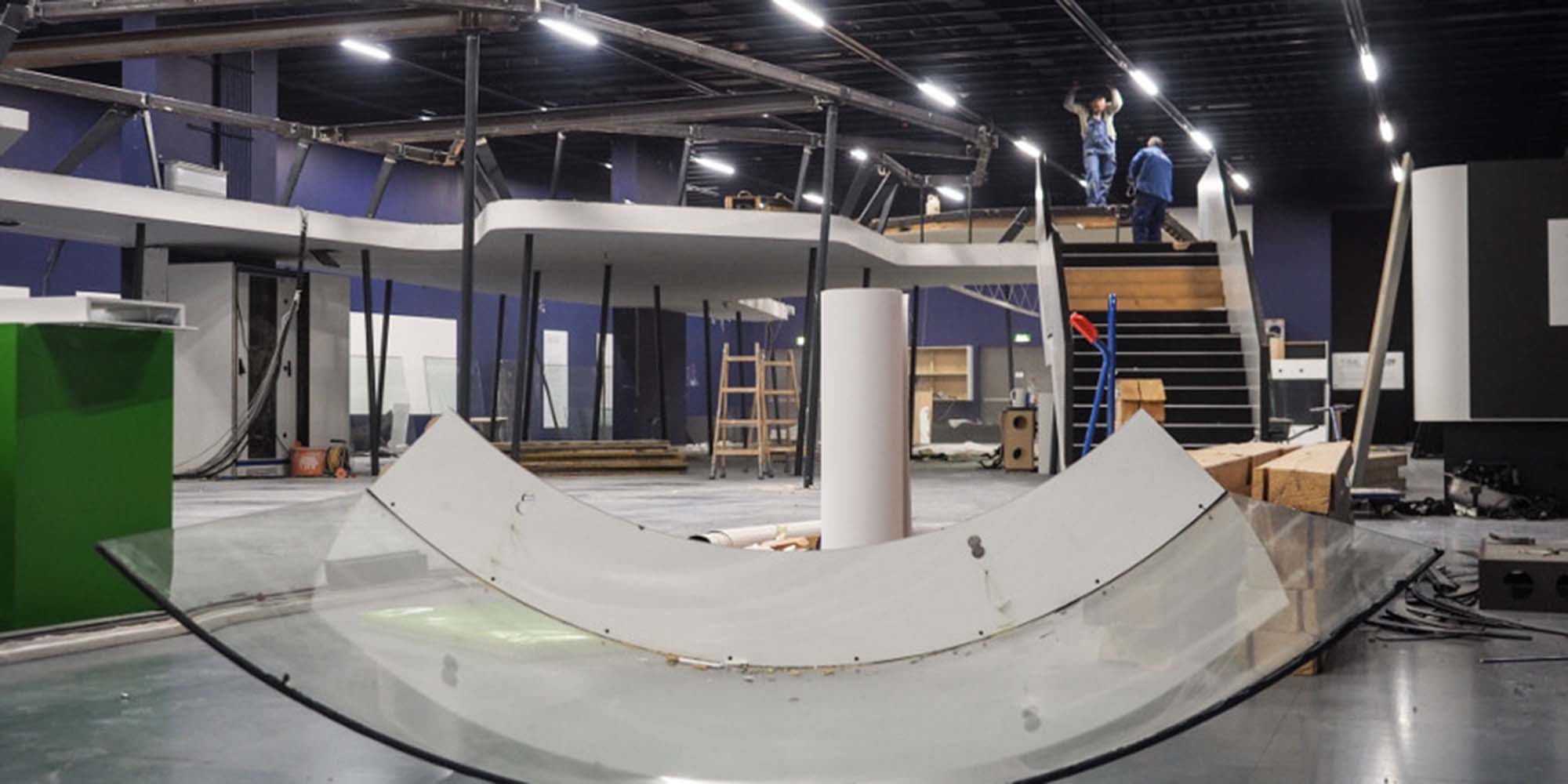
Reconstruction, Credit: Martin Hieslmair
On March 8th we celebrate International Women’s Day and let the LED facade of our museum shine purple. With the NEXTCOMIC Festival and the GameStage Austria two special events will take place in our house: The first one celebrates its 10th anniversary and this time is dedicated to interactive comics, more precisely Augmented Reality Comics. The Meisterschule für Kommunikationsdesign Linz shows how mobile phones and apps can not only be used to view the real environment, but also to add new design elements. The second examines the role of sound in (computer) gaming, both in the form of dynamic sound effects and in composed and generative music. In addition to short lectures, several game stations and interactive sound installations are available for experimentation.
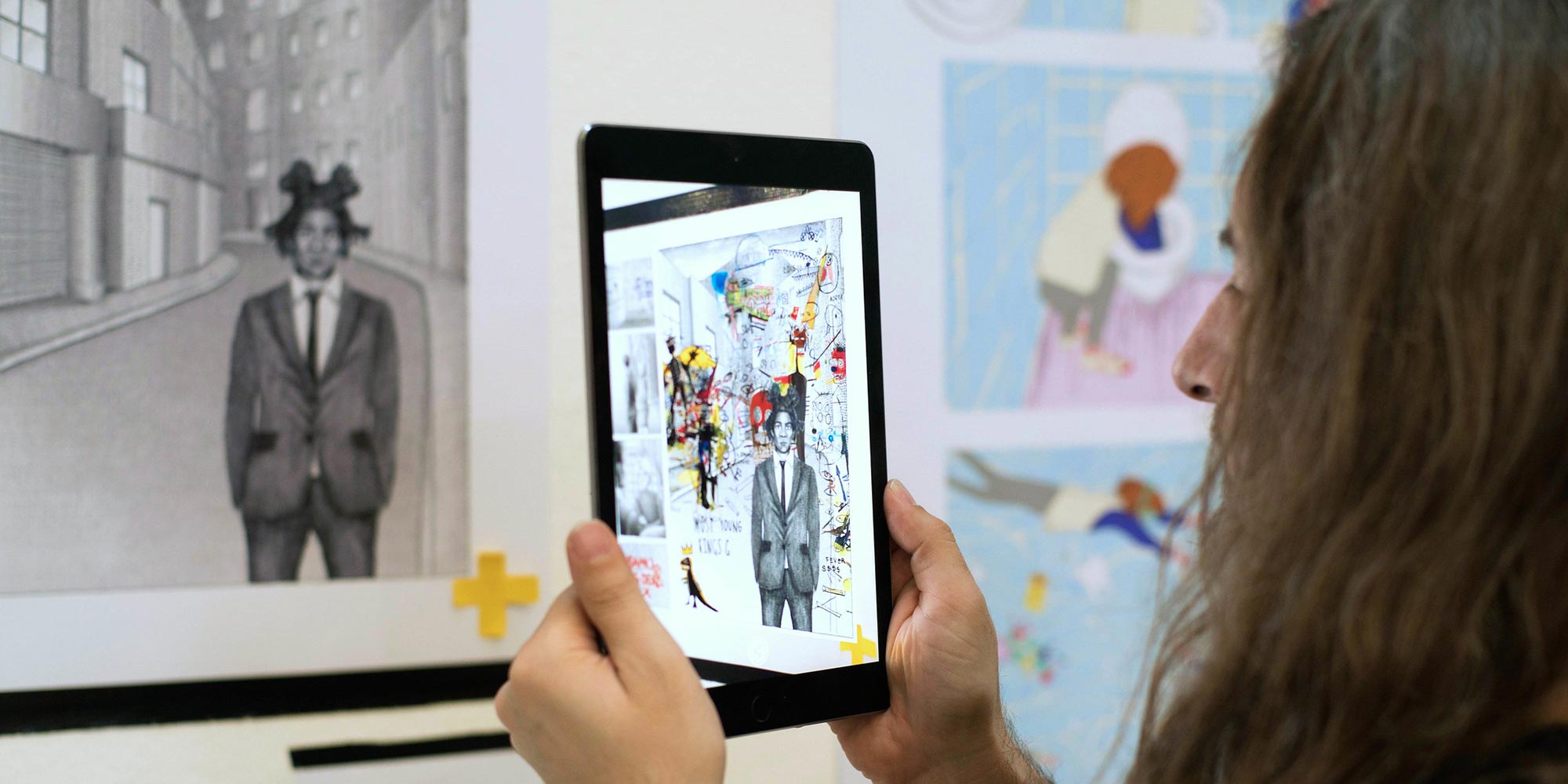
NEXTCOMIC Festival, Credit: Ars Electronica / Robert Bauernhansl
April 2019: Out of the Box!
It’s April and therefore it’ s time to present the theme of the upcoming Ars Electronica Festival for the first time. At a major press conference, we will announce our best-kept secret of the year: The theme of this year’s Ars Electronica is…:
„Out of the Box – The Midlife-Crisis of the Digital Revolution“!
Under the motto “Out of the Box – the Midlife Crisis of the Digital Revolution” we embark on an expedition to artistic-scientific surveying of our modern techno-economically shaped world, its future perspectives and our options for action. Let us begin with the “Midlife Crisis of the Digital Revolution” – although there is not much to explain in this respect. Various scandals around the quite disproportionate collecting and also rather careless administration of our data by Facebook, Amazon and Co., the temporary shutdown of the Internet by various autocratic states and similar things have made it obvious that the vision of a free and democratic Internet has recently moved into the far distance. The digital revolution, it seems, is in the midst of a midlife crisis. So what remains to be clarified is what the festival means by “Out of the Box”. Quite simple: Out of cover, out of the comfort zone, out of our bubbles and out of our ignorance. Out of the erroneous opinion that we can avoid responsibility for shaping the future! By the way, how the festival will implement this request can be read in part 2 of our annual review 2019.
Out of the Box means for all of us – out of the comfort zone! In order to remain able to act as mankind in the face of the burning questions in the context of artificial intelligence, the fusion of genetic and biotechnologies and the ecological destruction of our planet, it is necessary to venture into the unknown terrain of the digital systems we have created; to look over our garden fences with the help of art, to sound out possibilities and to cross them.
Gerfried Stocker, Artistic Director of Ars Electronica
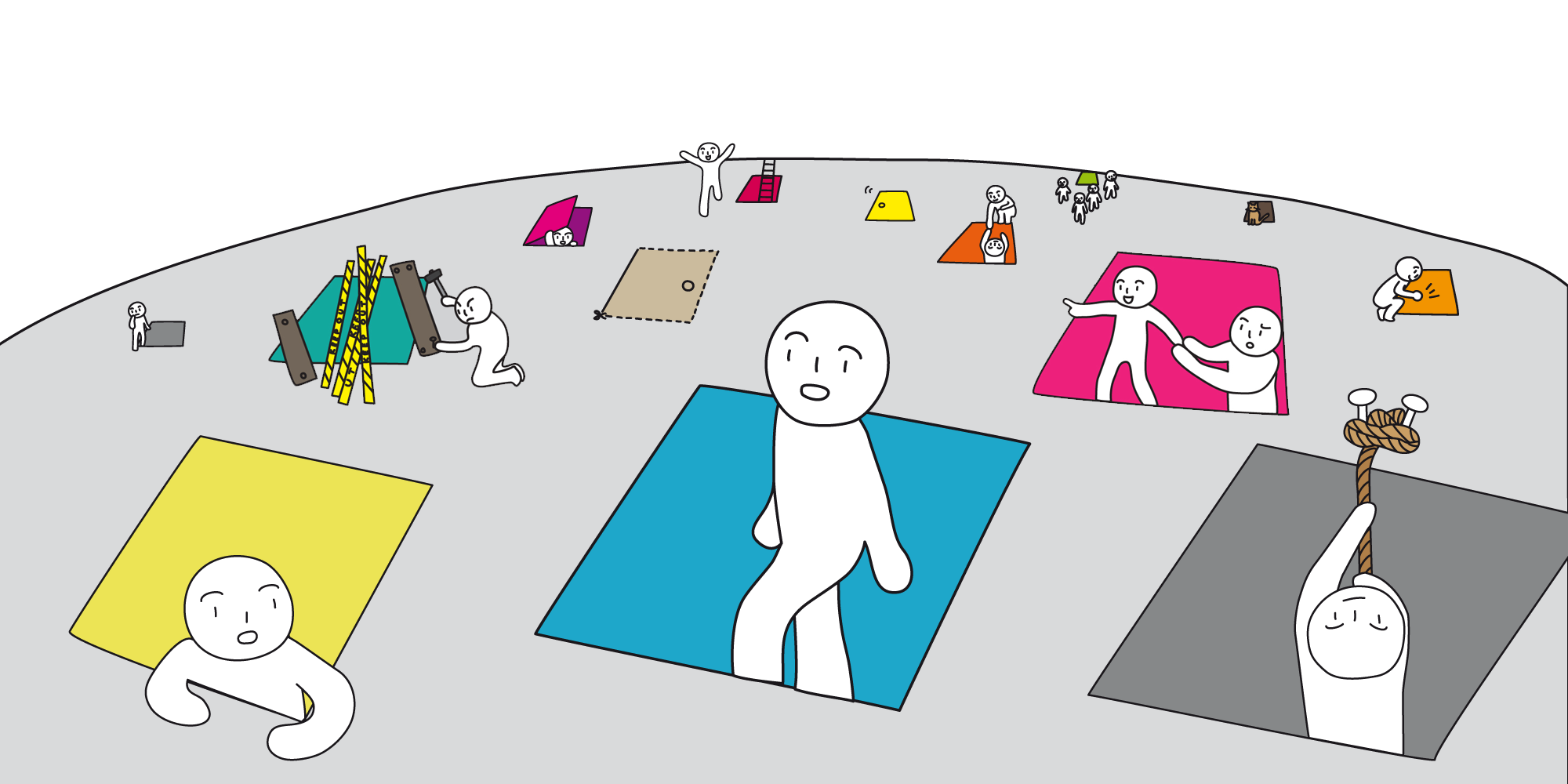
Ars Electronica Festival Sujet 2019, Credit: Emiko Ogawa
It is well known that the Deep Space 8K is a great place to experience extraordinary visual worlds. The fact that these images are commented and explained live by experts within the framework of the Deep Space LIVE format is also well known. In April, however, there is something on the agenda that we have never done here before: the LIVE transmission of a heart surgery from the operation theatre at the Kepler University Hospital, where Prof. Dr. Andreas F. Zierer, Chairman of the University Clinic for Cardiovascular and Thoracic Surgery, performs a corresponding operation and answers questions from the audience. As an introduction, Cinematic Rendering from Siemens Healthcare offers sensational photorealistic insights into the human body, explained by Primarius Franz Fellner.
The Deep Space 8K not only serves science as a platform for presentation, communication and research, but is also a playground for art, as the Tanzhafen Festival proves at the end of the month: The multidimensional space becomes a stage for contemporary dance and its various facets.
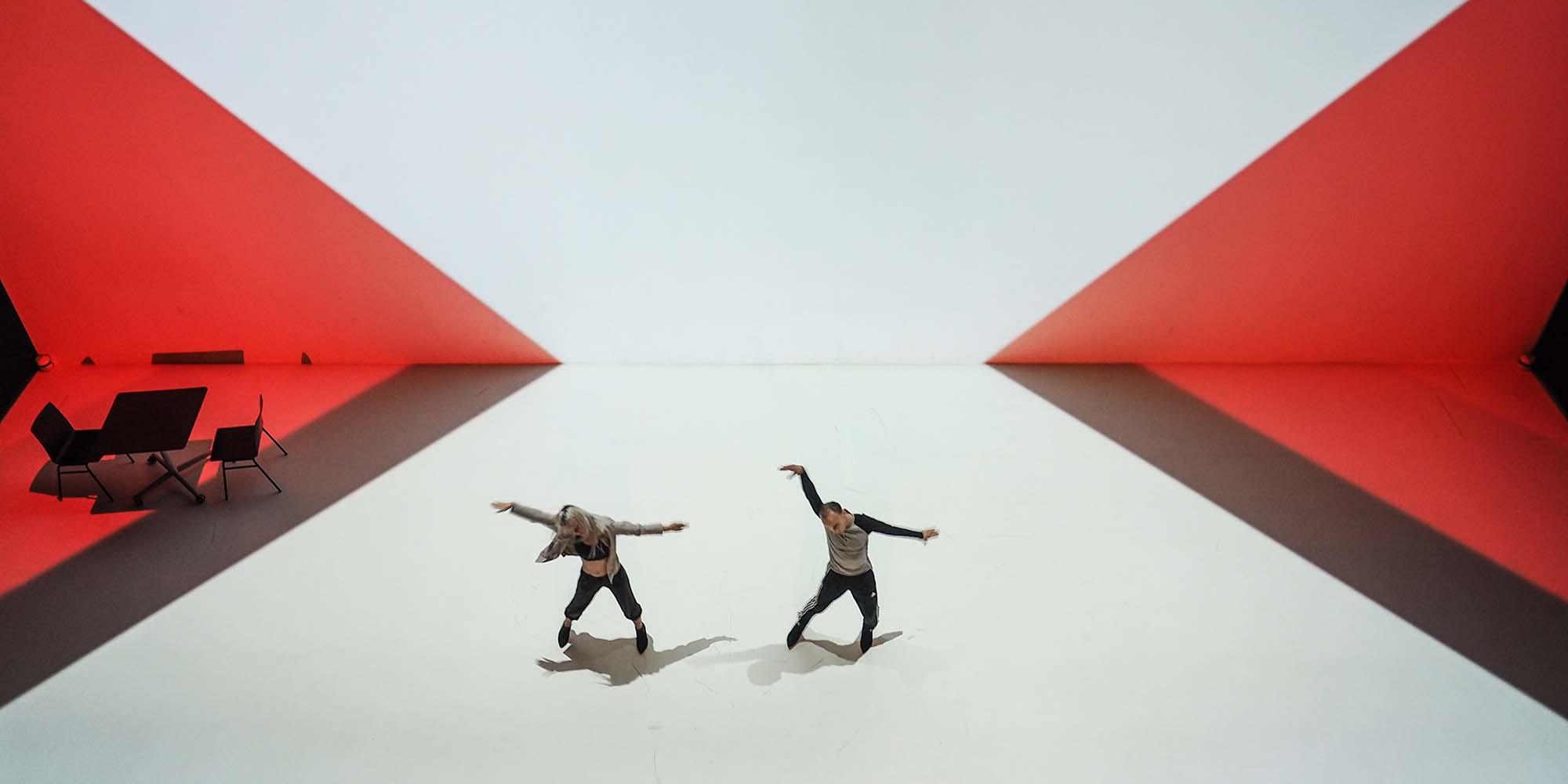
Bitter Desire / Roland Dandó (SK), Nikola Majtánová (SK), Credit: Ars Electronica / Martin Hieslmair
Out of Deep Space 8K and up towards Cyberspace for the teams in ESERO Austria‘s CanSat competition. The goal: a self-built small satellite – a CanSat – packed with all kinds of sensors, is to be shot several hundred meters into the sky by a rocket developed at the Vienna University of Technology and ejected there. During its descent, which is braked by a parachute, each CanSat has to send a series of measurement data to the mobile ground station, such as air humidity and temperature, wind speed and other data, which in turn have to be documented and evaluated here.
The next day, the winning team is announced: Stefan Galavics, Simon Köfinger, Peter Leithner, Alexander Traxler and Moritz Wallner from the “Space Explorers” of HTL Rennweg are allowed to represent Austria at the CanSat European Championship in Bologna! We congratulate (again) very much!
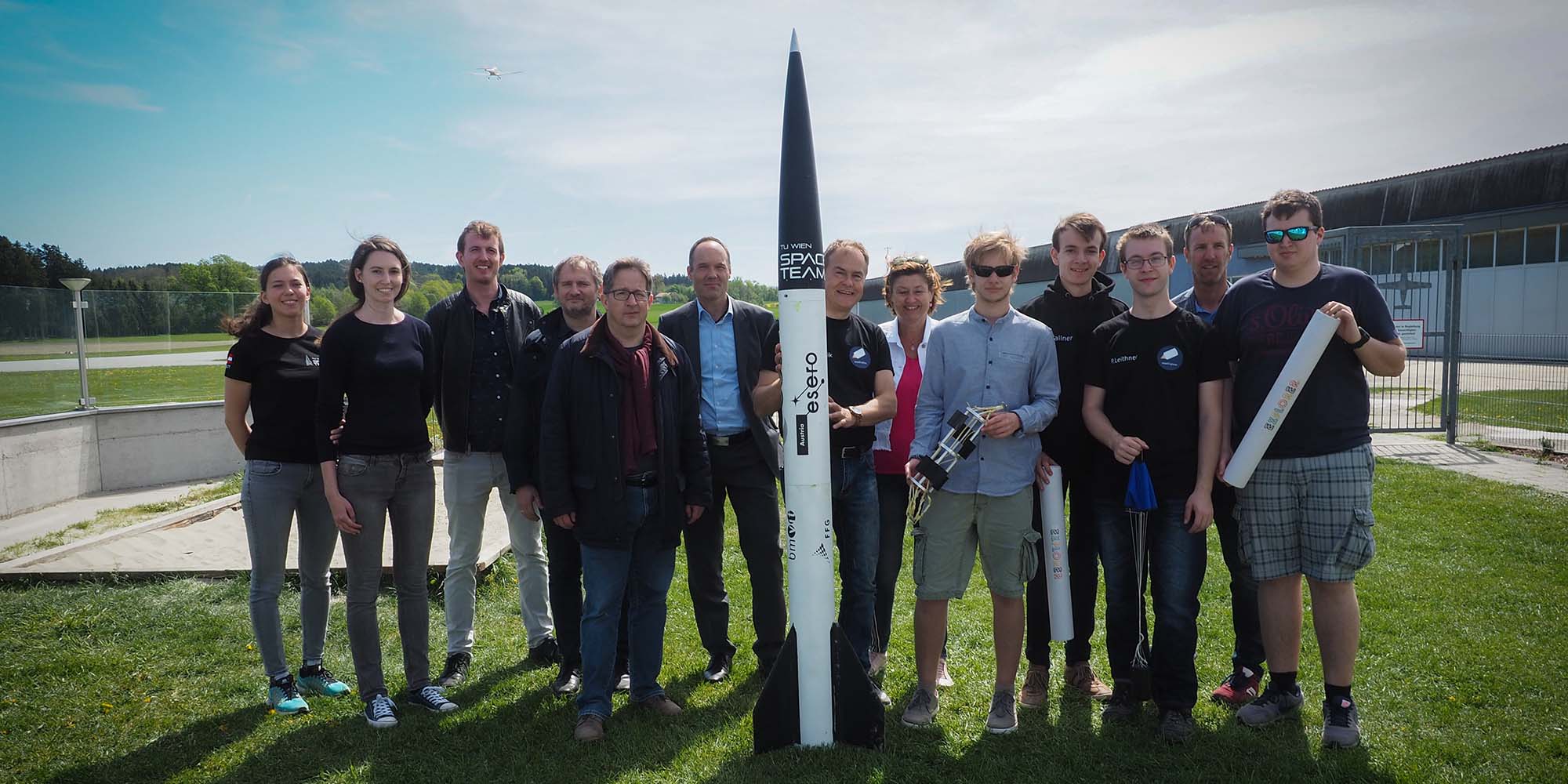
Team Space Explorers, Credit: Ars Electronica / Martin Hieslmair
Our team from Ars Electronica Solutions will be represented twice in April at the bauma mining & construction machinery fair in Munich. They are responsible for the spatial concept and staging of exciting installations at the stand of Palfinger, manufacturer of cranes, working platforms and lifting solutions for commercial vehicles, as well as at the stand of Liebherr, manufacturer of construction machinery.
May 2019: COMPASS – Navigating the Future
It’s terribly exciting in May! The conversion of the Ars Electronica Center is entering its final and therefore hot phase – a lot still needs to be done and completed before we can open our new building. In any case, everything must be ready by Monday, May 27, 2019, because that’s where the extensive opening program begins, which will last until Sunday, July 21, 2019, the 50th anniversary of the moon landing.
Finally! The day of the opening has come! On 27 May we are opening the big new exhibition (in the 3rd basement) and the new labs (in the 1st basement).
Three days later, on Thursday, 30 May 2019, an Open Day follows with free admission to enable anyone and everyone interested to see what the new exhibition can do in many special tours and short presentations.
All subsequent weekends will have a different motto, while in the meantime all upper floors will also be redesigned and officially opened on Tuesday, 18 June 2019.

pinocchio, Credit: vog.photo
The exhibition “Understanding AI” shows how neural networks are constructed and offers visitors the opportunity to train neural networks themselves with interactive stations. In the new “Machine Learning Studio” anyone can experiment with concrete applications of AI: self-driving cars are built and tested, robots are programmed with face recognition.

Understanding AI, Credit: Ars Electronica / Robert Bauernhansl
The exhibition “Neuro-Bionics” conveys what a quantum leap the fusion of connective tissue research and AI might possibly bring about. The “Global Shift” exhibition shows the role neural networks play in the scientific exploration of our planet and how they contribute to meeting challenges such as climate change.

ORBIT – A Journey Around Earth in Real Time / Seán Doran (UK), Credit: vog.photo
The majority of the new exhibitions have been developed by us – our experts from Ars Electronica Solutions and Ars Electronica Futurelab !

The Golden Nica, Credit: Ars Electronica / Martin Hieslmair
Another well-kept secret so far has been the winners of the STARTS Prize, the AI LAB Residency 2019 and the Prix Ars Electronica. We no longer wish to withhold the following winners from you:
“slow immediate” are the Residency winners of the European ARTificial Intelligence Lab. The duo was honored for their project “The wandering mind”, which is now being realized as part of residencies at the Muntref Centro de Arte y Ciencia as well as the Laboratorio de Neurociencia de la Universidad Torquato Ditella in Buenos Aires and the Ars Electronica Futurelab in Linz.
The Austrian Peter Kutin wins the Golden Nica in the category “Digital Musics & Sound Art” with his kinetic sound sculpture TORSO #1.
With TORSO I consciously deal with psychological and phenomenological aspects. This does not only happen on a sonic level. Relationships arise between what you see and what you hear – or believe to hear. Compositionally, I also work specifically with psychoacoustic means.
Peter Kutin, artist and winner of the Prix Ars Electronica in the Digital Music & Sound Art category
Filmmaker and director Kalina Bertin wins the prestigious statue in the Computer Animation category for “Manic VR” – a VR film that invites us to join her on a journey into the “inner worlds” of her siblings suffering from bipolar disorder.

Dschungel / Alex Lazarov (AT), Credit: Ars Electronica / Robert Bauernhansl
“What does exploitation smell like?” With this question, Paul Vanouse wins the Prix Ars Electronica‘s new Artificial Intelligence & Life Art category. LABOR deals with the formation of odors, sweat and work. For “Jungle”, a web series with 5 episodes that shows 24 hours in the life of a group of young people, Alex Lazarov receives the Golden Nica in the u19 – CREATE YOUR WORLD category.
The STARTS Prize 2019 in the category “Innovative Collaboration” goes to the innovation office “300.000 Km/s” in Barcelona, which has developed and successfully implemented a pioneering model of sustainable urban planning with “Ciutat Vella’s Land-use Plan”. The STARTS Prize in the category “Artistic Exploration” goes to Bjørn Karmann and Tore Knudsen for “Project Alias”, an intelligent parasite that forces smart home systems to respect our privacy.
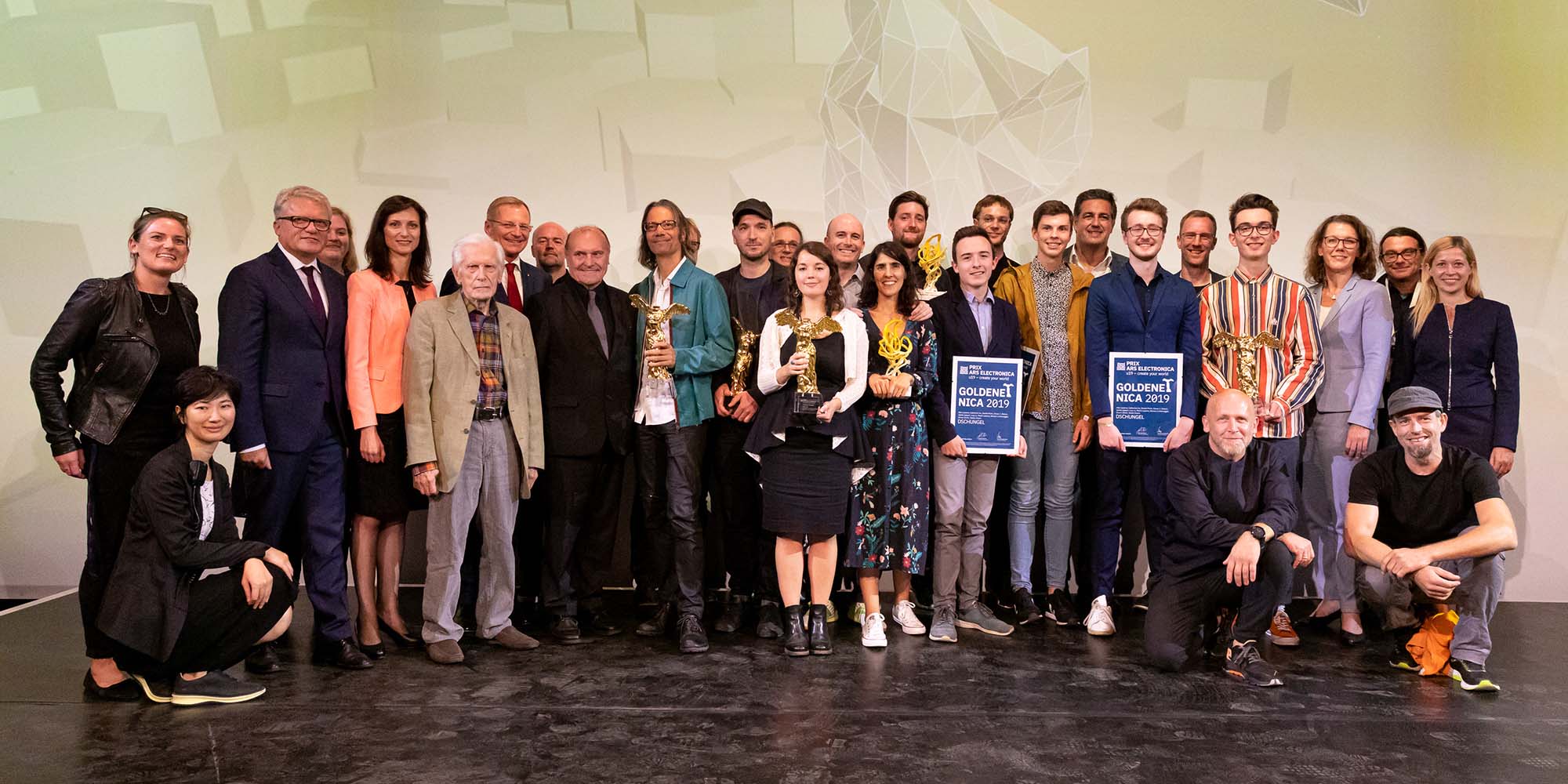
The winners of Prix Ars Electronica as well as STARTS Prize at Ars Electronica Gala in September, Credit: Jürgen Grünwald
The KTM Motohall opens in Mattighofen on 11 May 2019. Ars Electronica Solutions has developed an Innovation Lab for this purpose in which children and young people can playfully learn about design and production processes and the associated tools, such as various design software, laser cutters that enable cutting and engraving, and 3D printers that turn digital models into physical objects.
Two and a half years, five partners from all over Europe, a comprehensive objective: that’s Immersify, a Europe-wide research project on immersive media with substantial participation by the Ars Electronica Futurelab.
Our primary goal is to present visual or audiovisual media content in the most impressive, realistic and comprehensible manner possible.
Roland Haring, Technical Director at the Ars Electronica Futurelab
June 2019: A piano and lots of sounds
Opening ceremonies and celebrations will continue in June, but before then the upper floors of the new Ars Electronica Center must be completed at full speed and a concert piano lifted to the second floor in a spectacular manner.
Making the invisible visible, the still life of stones transformed into magical fantasy worlds, musical machines from different eras, composing AI systems and a children’s book about a survival artist-the new Ars Electronica Center is presenting three more fascinating exhibitions as part of the second major opening phase.
A new kids’ research laboratory is moving into the Center, “Mirages & miracles” by Adrien M and Claire B is moving into the new area for temporary exhibitions, and the exhibition AIxMusic will finally complete the series of new exhibitions.
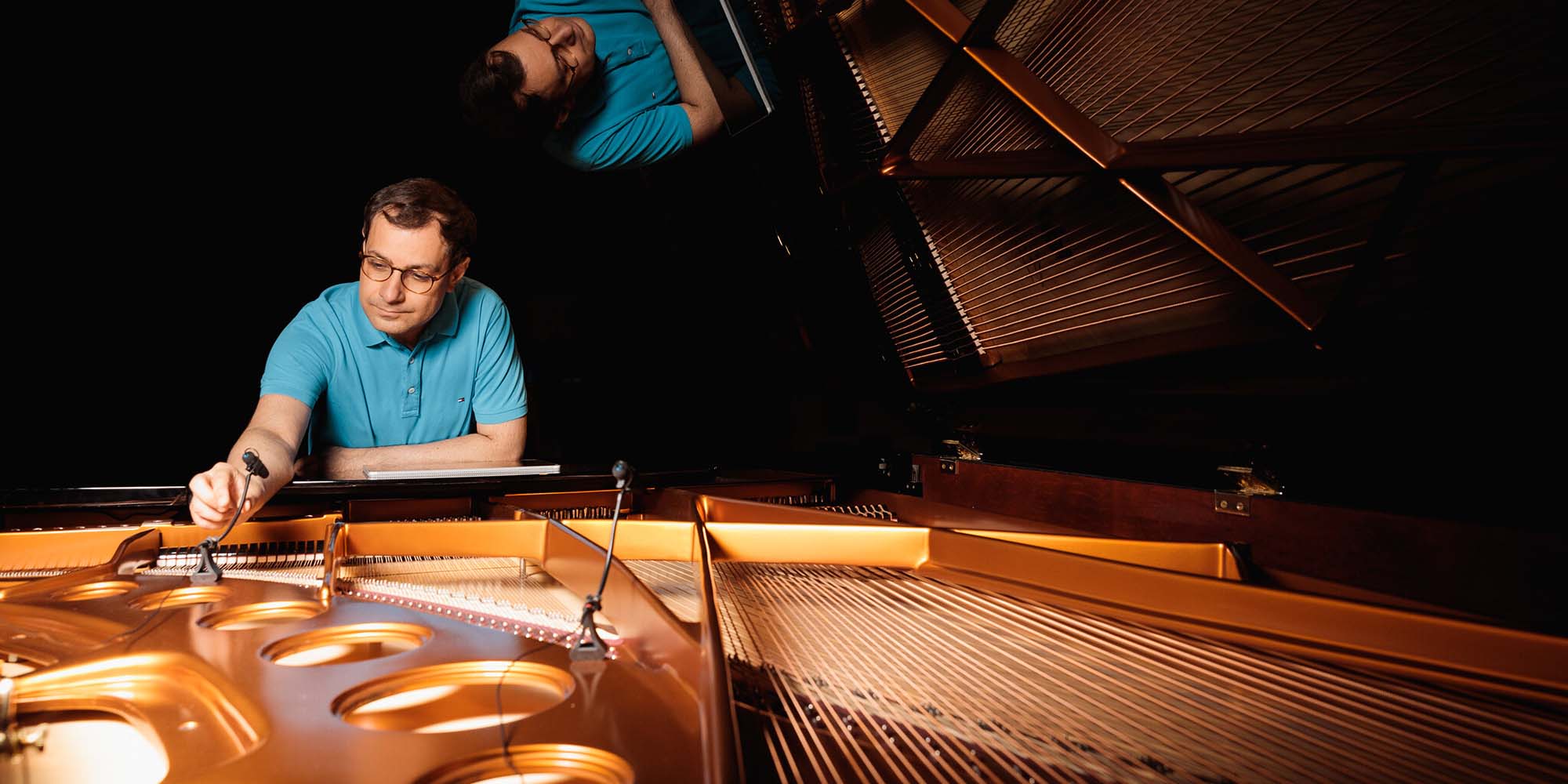
Bösendorfer 290 Imperial CEUS, Credit: vog.photo
The exhibition ‚Mirages & miracles‘ presents augmented reality in a virtuoso and imaginative way and the show ‘AI x Music’ shows that our creativity has always been expressed above all in music – in an attempt to create music artificially with automatons.
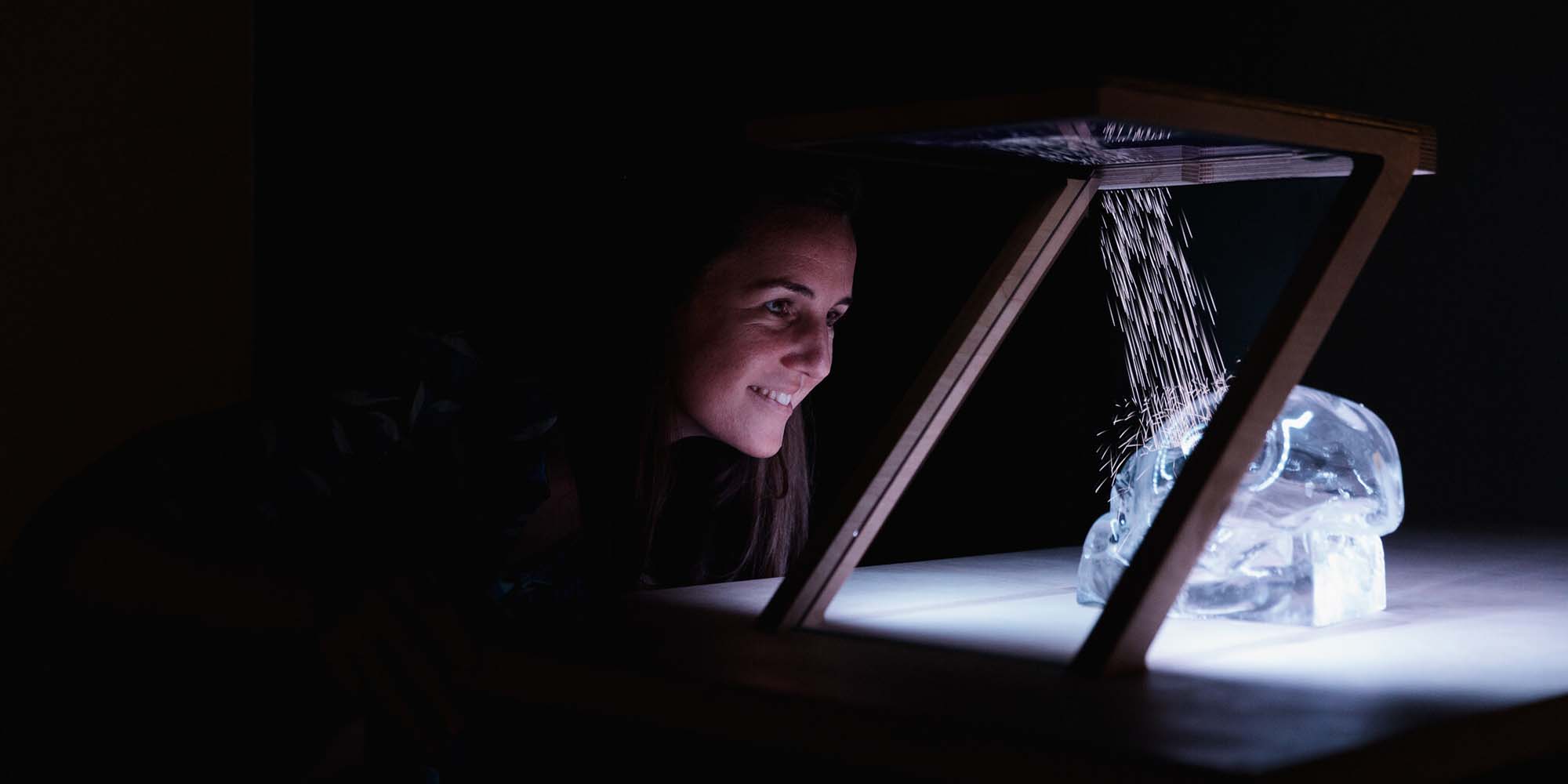
Mirages & miracles / Adrien M & Claire B, Credit: vog.photo
In addition, numerous school classes are already exploring the new center and the Family Days, which focus on playing and researching, are also an attraction for visitors of all ages.
Linz isn’t the only place where there’s a lot going on: Ars Electronica Solutions has planned an event for ABB that is taking place in Vancouver, Canada, on June 11, 2019. The aim of the event was to inspire visitors with the help of modern media technology and an innovative, intelligent overall concept, among other things. Ars Electronica Solutions helped make this goal a reality by designing and realizing show elements based on modern media technology.
But Ars Electronica Solutions’ colleagues are also presenting themselves in Austria: Walking Music is an interactive, social music installation that turns the First Campus into an instrument. Each person moving across the Campus triggers a series of musical sounds in real time. One person alone makes a melody sound, many people together make a harmony.
July 2019: To the moon and far beyond
It’s July, so despite the opening fever, it’s time to devote ourselves to the Ars Electronica Festival, which is scheduled to take place in September.

Entrance to Deep Space 8K, Credit: Ars Electronica / Robert Bauernhansl
To start with, however, the series of Theme Weekends in the newly designed Ars Electronica Center will continue in a lively manner: First, everything will revolve around Artificial Intelligence, then it will be “Departure into a New World – Digital Geography of the 21st Century”, “The Optimization of our Body” will be reflected upon, and shortly before the end of our opening specials, we will devote ourselves to the “Human Brain”.
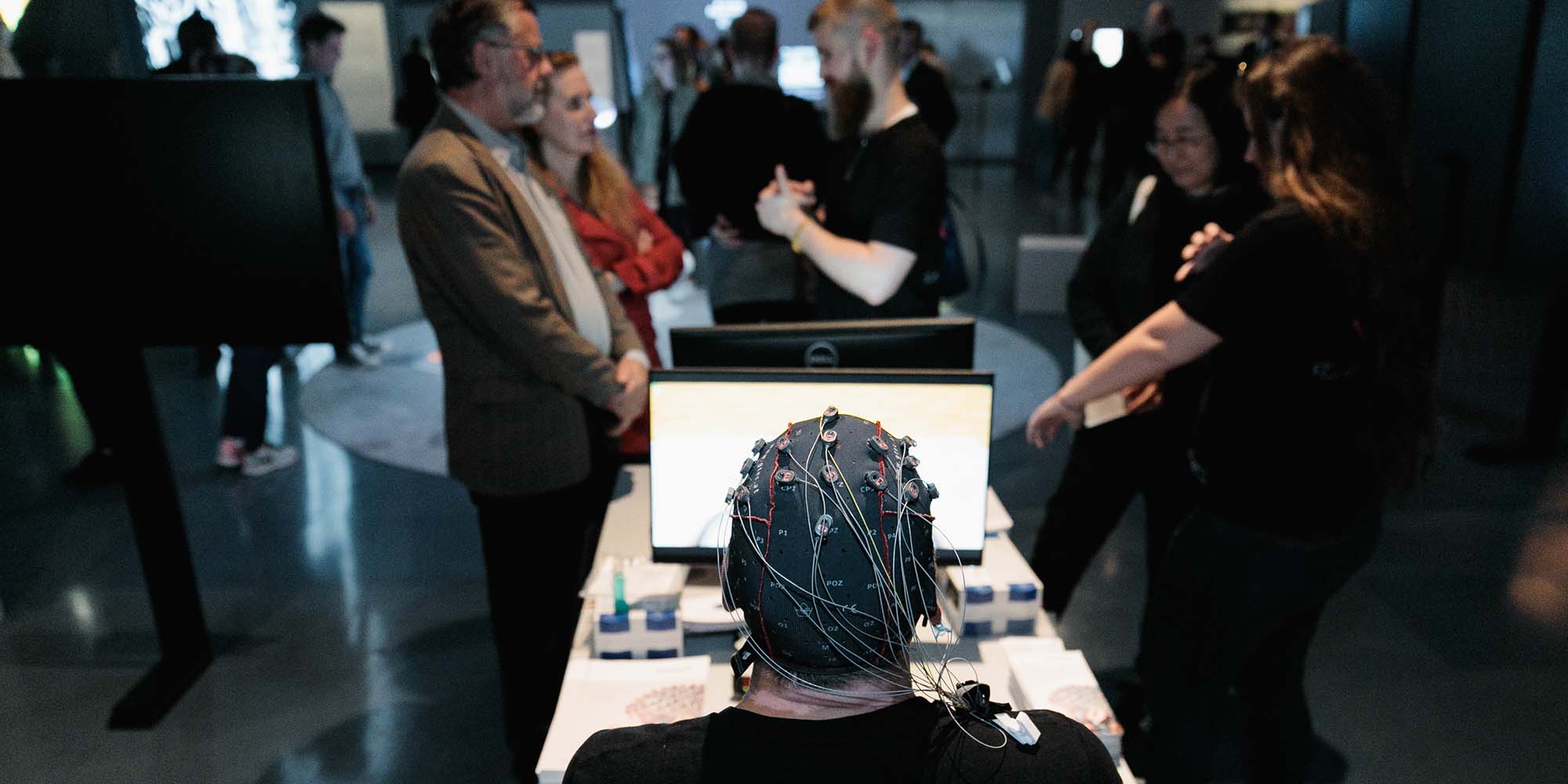
recoveriX: Stroke rehabilitation/ g.tec medical engineering (AT), Credit: vog.photo
The 50th anniversary of the moon landing is the perfect occasion to commemorate a great moment in science, which became the first global TV event and inspired the future hopes and visions of an entire generation.
It’s… halftime!
In all the weeks since the opening of the new Ars Electronica Center, numerous people have visited the new exhibitions and we’ve naturally been curious to find out how they/you liked it? Here is a small excerpt from reviews on Tripadvisor, Google and Facebook! We thank you very much!
A visit to the exhibition is always exciting and interesting!
Should not be missed when visiting Linz.
A MUST for those thirsty for knowledge.
Quite demanding.
One of the must see places on this planet.
Amazing contemporary place with so many “toys” I wish I were a kid again.
Very cool and always varied. Parking fee will be refunded, simply brilliant!
Interesting exhibition. Highlight was definitely the Deep Space Cinema in 8K. For me a must see in Linz.
Great fun, informative, insightful and staff are attentive.
Uniquely good!
Don’t miss it, worth going.
Deep Space is ingenious, exhibition incredibly interesting.
The museum is absolutely fantastic, my favourite exhibit were the robot SEER, the “Miracles and Mirages” pictures and the piano which composes its own music and plays itself. I am definitely going again as soon as possible! Keep up the good work!
The children are as enthusiastic as I am! 👍🏻😃
Great Cyber-World – a museum about present and future! Great staging, interactive presentation.
What a great site‼️
Always new and exciting. Attention: you need a really long time here! :-)
Super Museum – were in there for over 2,5 hours and haven’t tried everything yet.
Wonderful exhibits and the staff is very helpful.
The current exhibition on artificial intelligence was exciting.

Wordcloud Ars Electronica, Credit: Ars Electronica / Katia Kreuzhuber
And there’s something else we’d like to show you before we continue with the Ars Electronica Festival and thus the second half of the year: Under the hashtag #arselectronica you can share your “Ars Electronica moments” with your friends, with the world and with us on Instagram all year round! Below you will find a selection of your pictures. We would be happy if you would continue to share your visits with us in the future!
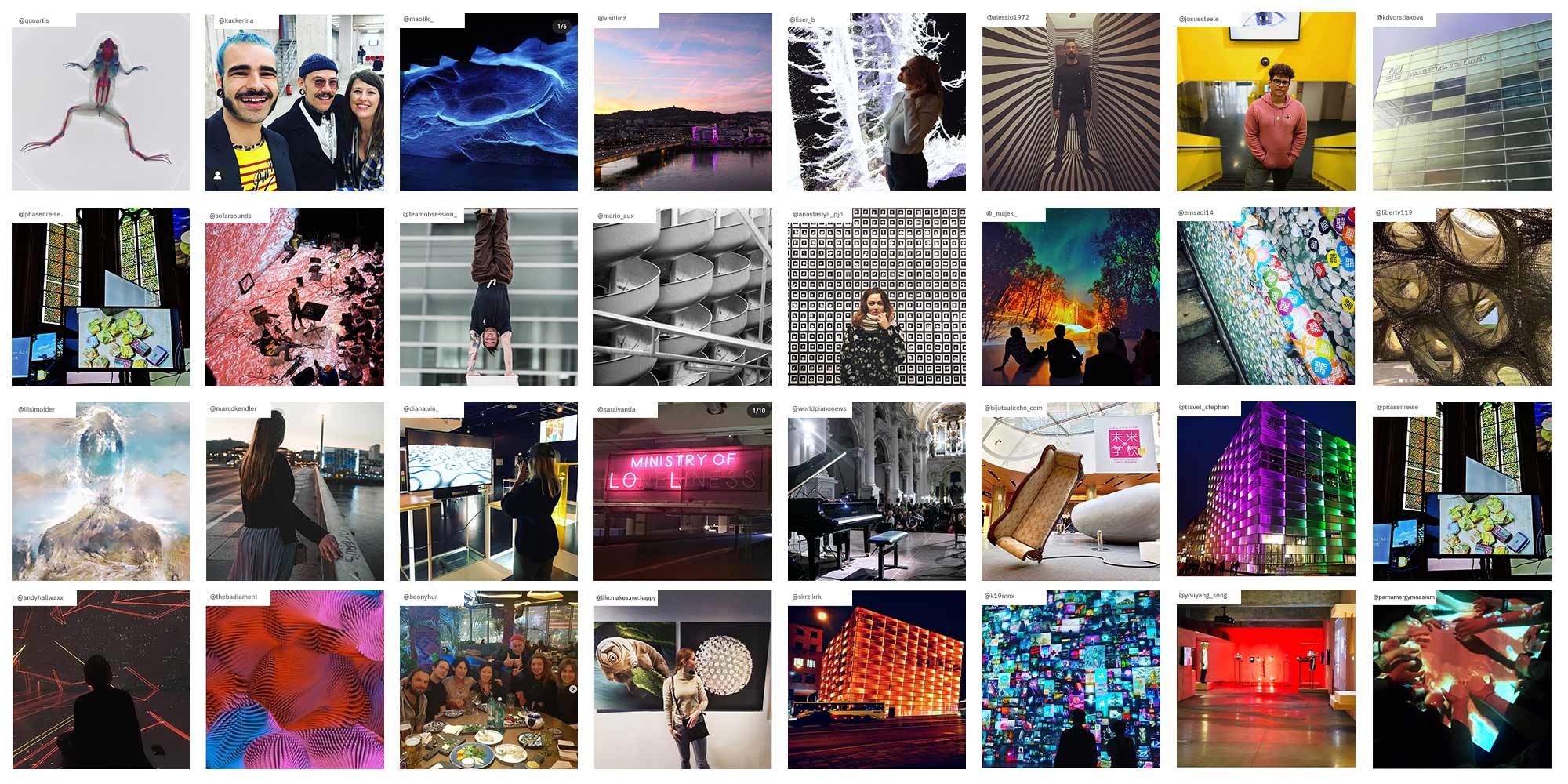
Hashtag #arselectronica, Credit: Ars Electronica / Katia Kreuzhuber
If you’d like to stay informed about all this and other activities in all our areas, sign up for our Newsletter, visit the Ars Electronica Blog from time to time and follow us on Facebook, Twitter, Instagram, Flickr and YouTube.
Right up next: Part Two of The Year 2019 in Review!
